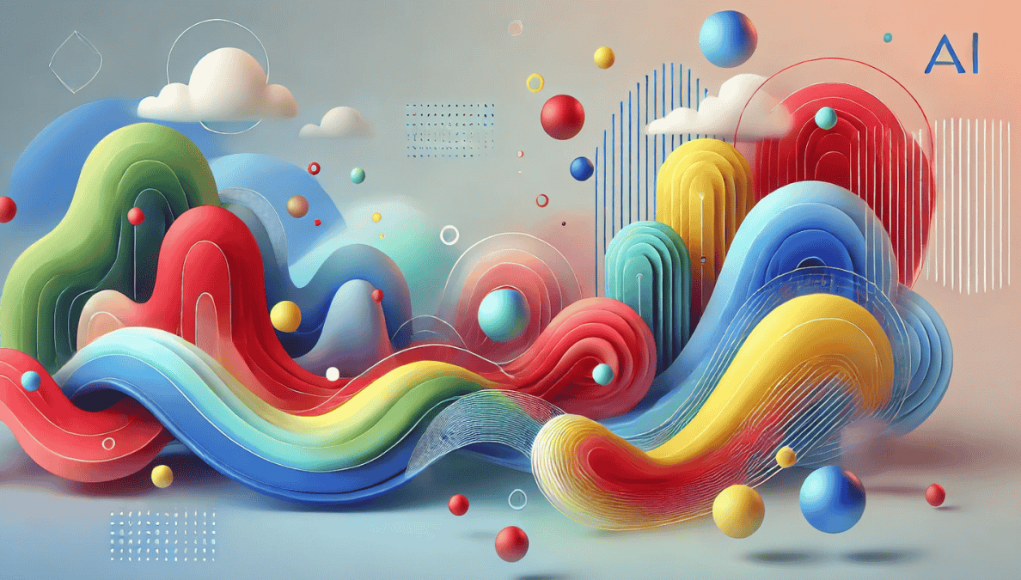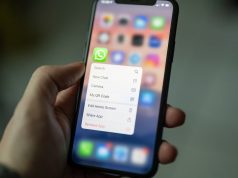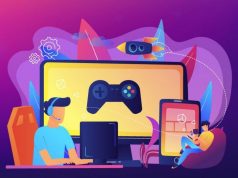The world of digital art is evolving rapidly, and at the forefront of this revolution is generative art, powered by artificial intelligence (AI). But generative art isn’t just about automating the creative process—it’s about pushing boundaries, combining human imagination with machine learning to create visual works that would have been impossible a decade ago. The love for arts is something that has lead to the development of Best AI Tools for Generative Art.
Whether you’re an artist seeking inspiration or a tech enthusiast curious about the intersection of creativity and technology, exploring the best AI tools for generative art can open new dimensions in artistic expression. These AI-powered platforms help you generate unique, stunning visuals, blending complex algorithms with artistic inputs to offer endless possibilities. With these tools, anyone—regardless of their technical skill—can turn abstract ideas into dynamic pieces of art.
How to Choose the Right AI Tool for Generative Art
When selecting the best AI tools for generative art, there are several factors to consider. Here’s a quick guide to help you make the right choice:
- Ease of Use: Not all AI art tools are beginner-friendly. Look for platforms with intuitive interfaces, especially if you’re new to generative art.
- Customization & Control: Some tools offer more customization in terms of style, color, and input, while others are more automated. Your creative goals will guide you here.
- Output Quality: The best AI tools produce high-resolution, print-worthy outputs. Whether for commercial or personal projects, make sure the quality matches your needs.
- Cost: Many AI tools offer free versions or trials, but premium features often come with a cost. Consider your budget and whether you’re looking for long-term use or just experimenting.
- Community & Support: A tool with an active community or responsive support can help you learn, troubleshoot, and grow as a generative artist.
By carefully considering these aspects, you can choose the right tool for art that not only aligns with your creative vision but also offers the support and quality you need.
15 Best AI Tools for Generative Art
The world of AI-driven creativity is vast, and finding the right tool can feel overwhelming. Here’s a curated list of the 15 best AI tools for generative art that can help you elevate your creative projects to the next level.
1. MidJourney
Overview:
MidJourney has risen to become a popular AI art generator renowned for producing stunning visuals based on text prompts. It excels in imaginative and surreal artworks, often used by professionals for concept art, fantasy illustrations, and even graphic novels. MidJourney continuously improves its models, providing more refined and expressive outputs, making it a favorite among artists looking for unique, creative outputs.
Features:
- Generates high-quality surreal and imaginative art.
- Text-prompt based generation.
- Fine-tuned for atmospheric, dreamlike outputs.
- Extensive community for inspiration and learning.
- Multiple styles to cater to varied artistic preferences.
- Detailed, multi-step rendering process.
- Ability to upscale generated images.
Pros:
- Excellent for concept and fantasy art.
- Strong community support.
- Continuous updates.
Cons:
- Complex for beginners.
- Paid subscription required for full access.
2. DALL-E 3
Overview:
DALL-E 3, developed by OpenAI, builds upon its predecessors by offering improved text-to-image generation with more realism and detail. Known for its versatility, DALL-E 3 can handle a wide range of art styles, from photorealistic to abstract. This makes it an essential tool for both casual users and professional artists alike.
Features:
- Simple user interface.
- Generates high-quality images from text prompts.
- Supports varied artistic styles.
- Easy-to-use prompt refinement options.
- Handles complex requests like text embedded in images.
- Great for high-resolution and detailed imagery.
- Integration with other OpenAI tools for seamless use.
Pros:
- Realistic and highly detailed outputs.
- Intuitive for beginners.
- Versatile across styles and themes.
Cons:
- Limited free usage; paid tiers for more access.
- Complex prompts can sometimes generate inconsistent results.
3. Stable Diffusion
Overview:
Stable Diffusion is an open-source AI tool specializing in generating high-quality images, particularly for more creative, artistic styles. Its models have improved over time, making it competitive in the text-to-image space. With its open-source nature, artists can train and fine-tune models for custom use cases.
Features:
- Free and open-source.
- High customizability for developers.
- Text-prompt based image generation.
- Integration with various platforms.
- Outpainting and inpainting support.
- Supports image-to-image generation.
- Large community and development support.
Pros:
- Free to use.
- Highly customizable.
- Great for artistic freedom.
Cons:
- Requires technical knowledge for advanced use.
- Lacks some of the realism seen in other tools like DALL-E 3.
4. ArtBreeder
Overview:
ArtBreeder allows users to create and explore genetic combinations of artworks. Its unique approach focuses on collaborative art generation, where users can combine elements of different images to create new works, making it ideal for creative exploration.
Features:
- Collaborative image creation through mixing.
- Supports portrait, landscape, and anime styles.
- Offers sliders to fine-tune images.
- Users can upload images for further edits.
- Allows exploration of genetic art trees.
- Gallery for inspiration and shared works.
- Accessible for beginners.
Pros:
- Intuitive for creative experimentation.
- Allows continuous edits on uploaded images.
- Accessible and easy-to-use platform.
Cons:
- Limited control over certain fine details.
- Quality can be inconsistent across styles.
5. NightCafe Studio
Overview:
NightCafe is known for its broad range of algorithms, allowing users to generate art with different styles and techniques. From photorealistic to artistic, NightCafe is suitable for both beginners and advanced users due to its easy-to-navigate interface and customization options.
Features:
- Multiple algorithms (CLIP-Guided Diffusion, VQGAN).
- Create artworks in various styles.
- Text-prompt based generation.
- Community-driven platform.
- Bulk-download images.
- Option to create videos from images.
- Purchase prints of your art.
Pros:
- Highly customizable.
- Support for different artistic styles.
- Active community and social features.
Cons:
- Credit system can be limiting.
- More control needed for fine-tuned editing.
6. Fotor AI
Overview:
Fotor AI is a versatile tool that blends traditional editing software with generative AI capabilities. Its ability to generate images from text prompts and offer various photo-editing tools makes it a popular choice for casual creators and designers.
Features:
- Text-to-image generation.
- Photo-editing and enhancing tools.
- Support for aspect ratios and style adjustments.
- Dark-mode interface.
- Image upscaling and retouching.
- Save and download artwork easily.
- Supports user-uploaded images for edits.
Pros:
- Great for beginners due to user-friendly interface.
- Versatile for both editing and generation.
- Robust style and ratio controls.
Cons:
- Limited free options.
- Occasional slow processing times.
7. Photosonic by Writesonic
Overview:
Photosonic is designed for users who want a simpler AI art generation tool. Its intuitive layout and straightforward features make it an excellent option for those looking to generate visuals quickly without complex interfaces.
Features:
- Simple text-to-image generation.
- Face restoration and background removal tools.
- Choose different aspect ratios for outputs.
- Easy customization for beginners.
- Fast rendering times.
- Affordable subscription plan for extended use.
- Bulk generation of images.
Pros:
- Quick and user-friendly.
- No learning curve for beginners.
- Accurate results for basic tasks.
Cons:
- Limited features compared to advanced tools.
- Free credits are minimal.
8. DeepAI
Overview:
DeepAI has been in the AI art generation space for years, offering a broad spectrum of tools. Its text-to-image generation and editing capabilities have improved, making it a go-to for those who want control over artistic details.
Features:
- Generates images from text.
- Supports various artistic styles.
- Open-source platform.
- APIs available for developers.
- Image orientation adjustments.
- Image editor for post-processing.
- Great for high-resolution outputs.
Pros:
- Free to use with no signup required.
- Supports various artistic styles.
- Developer-friendly with APIs.
Cons:
- Interface can be basic.
- Occasional limitations with detailed text prompts.
9. Runway
Overview:
Runway is primarily used for video content creation but excels in offering AI tools for generating and editing images. It is known for being accessible to both professionals and beginners, thanks to its user-friendly platform.
Features:
- AI image and video generation.
- Editing tools for post-production.
- Background removal and masking features.
- Supports collaboration with teams.
- Simple UI for beginners.
- Numerous effects and filters.
- Real-time rendering and adjustments.
Pros:
- Versatile for different media types.
- Collaboration features are useful for teams.
- Accessible for all experience levels.
Cons:
- Best features are locked behind paywalls.
- Processing can be slow for large projects.
10. Dream by WOMBO
Overview:
Dream by WOMBO is a quick and fun tool to create AI-generated artwork based on text prompts. Known for its ease of use and fast rendering, it offers various art styles to users, making it a favorite for casual creators and social media enthusiasts.
Features:
- Text-prompt based generation.
- Variety of styles like comic, abstract, and photorealistic.
- Easy sharing options for social media.
- Mobile app support.
- Fast image generation.
- No technical knowledge required.
- Fun and accessible to beginners.
Pros:
- Free to use with a variety of styles.
- Quick and easy outputs.
- Great for social sharing.
Cons:
- Quality may vary across styles.
- Limited advanced editing options.
11. Getimg.ai
Overview:
Getimg.ai is a powerful AI image generation platform designed for users looking to create visually stunning art quickly and efficiently. With its unique focus on allowing users to generate high-quality images through simple text inputs, Getimg.ai stands out as a tool for designers, artists, and casual creators alike. It also includes features like Dreambooth for training custom models and outpainting, making it an ideal choice for those looking to expand or tweak their existing images.
Features:
- Text-prompt based image generation.
- Dreambooth integration to train AI models.
- Outpainting for expanding existing images.
- Supports bulk image generation.
- Fast output speeds, producing results in seconds.
- High customization options for precise control over generated outputs.
- Beginner-friendly interface.
Pros:
- Ideal for high-quality, unique images.
- Custom model training allows for personalized outputs.
- Free credits upon sign-up.
Cons:
- Requires some technical knowledge for advanced features.
- Outpainting is still in the beta phase.
12. StarryAI
Overview:
StarryAI is a user-friendly AI art tool that focuses on transforming text prompts into stunning, creative visuals. Its use of Altair and Orion models ensures a range of artistic possibilities, from realistic photo-like images to more abstract creations. StarryAI also allows users to upload their own images to be transformed, which makes it a versatile tool for various creative needs. With its intuitive design and customization options, StarryAI is great for both novice and experienced users looking to experiment with AI art.
Features:
- Altair and Orion models for diverse image generation.
- Allows text-prompt and image-to-image generation.
- Options for canvas size and run time to fine-tune results.
- Over 1000 customizable styles.
- Bulk image generation supported.
- User-friendly prompt builder for beginners.
- Mobile app availability.
Pros:
- Wide range of styles and customization.
- Easy for beginners to create high-quality art.
- Supports bulk image generation.
Cons:
- Free credits are limited.
- Results can be inconsistent based on prompt complexity.
13. CF Spark
Overview:
CF Spark is part of Creative Fabrica’s digital marketplace and serves as an AI art generator that focuses on empowering users to monetize their generated art. The platform allows members to sell their generative AI files, making it a great choice for creators looking to commercialize their work. CF Spark provides four images per prompt and enables users to publish their creations for others to view and purchase, setting it apart as a unique tool for artists with an entrepreneurial focus.
Features:
- Monetization of AI-generated art.
- Text-prompt based image generation.
- Speed credits for faster image generation.
- Option to publish and sell artwork within the Creative Fabrica marketplace.
- Variety of image styles and sizes.
- Access to millions of prompts generated by other users.
- Easy-to-use interface with a focus on user creativity.
Pros:
- First platform to offer art monetization.
- Large prompt library for inspiration.
- Simple interface, accessible to all skill levels.
Cons:
- Requires a Creative Fabrica membership for full access.
- Limited to specific styles and use cases.
14. Fotor
Overview:
Fotor AI Art Generator combines traditional photo-editing tools with AI-powered image generation. It is particularly useful for users who want to customize images further after generation. With its ability to generate images from text prompts and support for a wide variety of styles and adjustments, Fotor stands out as a versatile tool for both casual users and professionals. It’s ideal for designers looking for a blend of generative and editing capabilities in one platform.
Features:
- Text-prompt based image generation.
- Photo-editing and retouching tools.
- Customizable size, light effects, and composition.
- Image upscaling for high-resolution results.
- Supports image-to-image editing.
- Dark mode for comfortable editing sessions.
- Save and download past artworks.
Pros:
- Great combination of generation and editing tools.
- High level of customization for advanced users.
- Beginner-friendly interface.
Cons:
- Limited free tier.
- Some features may take longer to process depending on the image.
15. Shutterstock AI
Overview:
Shutterstock AI brings the power of AI to the renowned stock image platform. With this tool, users can create original, high-quality images for personal or commercial use. Shutterstock AI allows users to refine their image generation through specific styles and preferences, while the images produced are ideal for marketing, advertising, and creative projects. The platform’s integration with its vast image library further enhances its value, making it a go-to tool for professionals in need of commercial-ready visuals.
Features:
- Text-prompt based generation with style selection.
- Commercial usage rights included.
- Access to Shutterstock’s vast image library.
- Unlimited variations of generated images.
- Various output sizes for different needs.
- User-friendly interface for seamless use.
- Supports multiple languages for prompt inputs.
Pros:
- Perfect for commercial use.
- Extensive customization options.
- High-quality, professional outputs.
Cons:
- Takes longer to generate images compared to some competitors.
- Paid plan required for extended use.
Conclusion
As technology and creativity intertwine, AI tools for generative art are redefining how we think about artistic expression. By experimenting with these tools, you can expand your creative horizons, unlocking new ways to visualize and share your ideas with the world. Whether you’re a seasoned digital artist or a curious beginner, the right AI tool can make the difference in crafting unique, impactful art. Explore, experiment, and let your imagination run wild!





